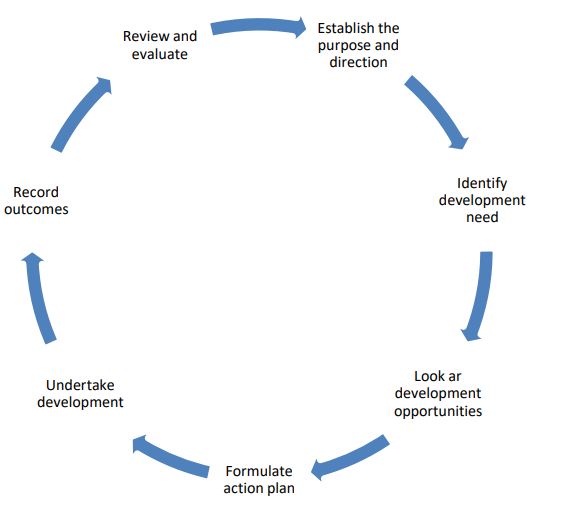MPM7008 Capstone Project Semester 2 & 3 Module Handbook – CMU
Module Welcome, Aims & Learning Outcomes
This module will provide an opportunity for students to synthesize, integrate and apply the skills and competencies they have acquired to a project management investigation that approximates to a professional practice experience. Capstone projects provide students with the opportunity to mix interdisciplinary elements of learning into a report and PDP.
The creation and completion of the report is an important and fulfilling synthesizing experience for students. In addition, the capstone project provides a concrete outcome from their learning of various project, program and portfolio interdisciplinary themes in wide ranging contexts. Additionally, the other deliverable from this module, PDP portfolio encourages students to consider their future experiences, addressing their use of time and potential opportunities in positive and imaginative ways.
- Define a research question, showing how it relates to existing knowledge
- Identify the tools needed to investigate the research question in a systematic way
- Analyse the results obtained and present the outcomes in a report that is clear, coherent and logically structured
- Develop critical self-reflection via Personal Development Planning (PDP)
Assessment Overview
Personal Development Plan
20% of the overall mark for the final project is the development of an individual Personal Development Plan.
Learning Outcome
Develop critical self- reflection via Personal Development Planning (PDP)
Your task is to write in 1600 words about:
- the skills you have
- the skills you need
- what you want to achieve and how to achieve it
- focus on potential study, career and personal development options and goals
- develop a source of information for CVs, job applications and personal development
Supplementary information for PDP
A Personal Development plan (PDP) is an opportunity to set goals in the short, medium and long-term. This involves the consideration of current realities as well as identifying what skills, knowledge and competences are needed to make progress into the future.
This is not something that remains static but changes over time and to illustrate this further, there is an identifiable personal development cycle that helps interpret the stages of the process:

Do You Need MPM7008 Capstone Project Assignment of This Question
Order Non Plagiarized Assignment
An action check list features in figure 1 and shows the following process:
- Establish your purpose and direction
- Identify development needs
- Identify learning opportunities
- Formulate an action plan
- Undertake the development
- Record the outcomes
- Evaluate and review
CMI have produced a planning template available on www.managers.org.uk
The Open University also discusses PDP in the educational context see the website which says:
‘PDP supports the idea that learning is a lifelong and life-wide activity. The process of PDP can strengthen the capacity of learners to reflect upon their own learning and achievement and to plan for their own personal, educational and career development. This is a core learning process, required throughout the education system and in many areas of employment and continuing professional development contexts.’-
Personal development planning: guidance for institutional policy and practice in higher education. The Quality Assurance Agency for Higher
Education (QAA), February 2009
PORT1 Personal Development Plan (PDP) Marking Scheme

Independent Research Report
Learning Outcomes
- Define a research question, showing how it relates to existing knowledge
- Identify the tools needed to investigate the research question in a systematic way
- Analyse the results obtained and present the outcomes in a report that is clear, coherent and logically structured
Task
You are required to investigate a topic relevant to Project Management. This is your opportunity to explore the literature and shape an
investigation into extant data to reach your own findings. The word count expectation is 8,500 words.
Consider the following when preparing a report:
- Follow report structure
- Layout should meet professional standards
- Use the report format of headings and subheadings
- Include relevant investigation and background material to suit the topic
- Wide ranging sources should be in evidence
- Different types of sources may be in evidence (including both qualitative and quantitative data)
- Support the narrative with relevant tables and figures
- Reach a clear conclusion and make recommendations.
Marking Guidance
| Mark | Description |
| 80 – 100 | A full and detailed understanding of the set task and an ability to have met the learning outcomes and address the assessment criteria at an excellent level (80- 89%) or outstanding and exceptional level (90- 100%) and beyond level 7. Work is of a standard deemed worthy of publication/manufacture/ public exhibition/public performance. |
| 70 – 79 | A full and detailed understanding of the set task and an ability to have met the learning outcomes and address the assessment criteria at a very good level. |
| 60 – 69 | A full understanding of the set task and an ability to have met the learning outcomes and address the assessment criteria at a good level |
| 50 – 59 | A basic but secure understanding of the set task and an ability to have met the associated learning outcomes and address the assessment criteria at a threshold level. |
| 49 -40 | A partial understanding of the set task and an ability to have met the associated learning outcomes and address the assessment criteria at a limited and insufficient level. Unsatisfactory overall. However, attainment is uneven with some learning outcomes not met and some assessment criteria unaddressed. |
| 20 – 39 | Unsatisfactory overall. A minimal understanding of the set task and an ability to have met some of the associated learning outcomes at a basic level. However, attainment is uneven with many assessment criteria unaddressed. |
| 1- 19 | Very poor, incomplete and/or irrelevant. Demonstrates a serious lack of comprehension and/or engagement with the set task. May have misunderstood the set task. No learning outcomes are met in full, although there may be minimal attainment in one or two areas. |
